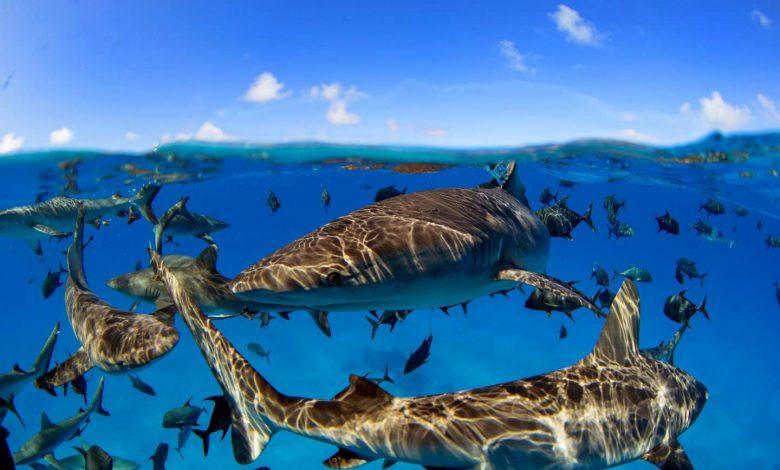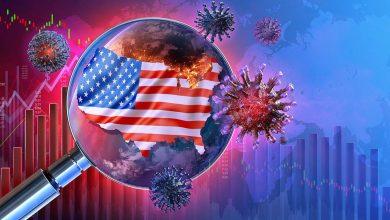COVID-19, a Serious Threat that “Could” Affect Marine Species Across the Globe is Now Being Researched
How has the COVID-19 Impacted Wildlife?

In unprecedented times, with the ongoing COVID-19 pandemic, which has affected public health, the economy and society on a global scale, the impacts are also reaching the environment and wildlife. Pathologist Sabateeshan Mathavarajah of Dalhousie University School of Medicine, Halifax, Canada reveals in a recent study that poor wastewater management can have devastating effects on marine mammal populations that are already in decline by being exposed to the virus.
Although COVID-19 is essentially a respiratory disease, analysts are pointing out that the pathology would turn into a multi-organ infection, including, for example, the gastrointestinal tract. Researchers have shown that COVID-19 patients spill contamination through their urine and the virus has been discovered in untreated wastewater in many countries, including Italy, Spain, France, and Australia. Mathavarajah has brought to the fore the essential role of wastewater treatment and management during these times. One consequence of poor management is the discharge of wastes carrying infectious SARS-CoV-2 into natural water systems that host marine mammals.
In his analysis, he reveals the susceptibility of marine mammal species, where he predicts that many species of whales, dolphins and seals, as well as otters, are highly susceptible to infection. Additionally, geographic mapping highlights how current wastewater management in Alaska may lead to susceptible marine mammal populations being exposed to the virus. Since more than half of these susceptible species are already at risk worldwide, the release of the virus through untreated wastewater could have devastating consequences for their populations that are already in decline.
Caring for free and captive fauna
The researchers indicate that many types of marine mammals found near contaminated natural waterways will be exposed and that it is vital to determine which ones are most at risk. To this end, researchers have analyzed the data available on the ordered genomes of marine mammals and subjected them to a modeling approach to predict their susceptibility to COVID. The study outlines approaches that the public, policy makers, and wastewater treatment facilities can take to reduce the risk of virus spread in natural water systems. They highlight the potential for reverse zoonotic transmission of COVID-19 and its impact on marine wildlife; issues that can be mitigated with appropriate actions to avoid further damage to these vulnerable populations.
Since more than half of these susceptible species are already at risk worldwide, the release of the virus through untreated wastewater could have devastating consequences for their populations that are already in decline. The serious consequences of the transmission of SARS-CoV-2 through water to marine populations raises the question: are there concrete steps we can take to mitigate the risks of current and future pandemics for populations of wild and marine animals? captives?
To start addressing this question, they have put together a list of possible approaches. For example, restricting contact and access to endangered species in marine parks could help protect marine mammals in captivity. Such a plan has been suggested to protect other susceptible species, including lions and tigers, following the reverse zoonotic infection of a tiger with SARS-CoV-2 at the Bronx Zoo in New York. Similarly, non-human primates and Old World monkeys are also predicted to be highly susceptible to SARS-CoV-2 and these findings have led to better measures to protect these primates in zoos. Such restriction measures should also be present in aquariums housing susceptible marine mammals in the future.
Exposure to Wastewater is the Main Point of Concerns
For wild animal populations, the main concern will be the potential for exposure to wastewater. Mathavarajah and his team urge monitoring and testing of marine mammal populations to determine if any reverse zoonotic transmission events have occurred. New monitoring technologies will be powerful for such tasks. For example, SnotBot, is a drone that retrieves mucus from whales which can be used to identify any event of virus spread, as SARS-CoV-2 is likely to be detected in mucus from infected animals. Non-invasive approaches are invaluable in tracking the spread of the virus. Therefore, research on how to continue to monitor these species after this time will be critical to assessing the impact of a human pandemic on wildlife.
Vaccinating Select Animals “May” be the Answer
If a possible spread of the virus is identified, a feasible approach may be to vaccinate selected populations of continental freshwater (eg otters) or coastal marine mammals (seals). The vaccination approach was previously shown to be feasible in a Sable Island gray seal vaccination study, where it was used as a form of contraception. Given that vaccination technology will be available, it is not unreasonable to imagine that wild populations affected by the virus, like humans, can be protected by herd immunity through this route.
The evaluation and proper treatment of wastewater is a measure that will be key to reducing the effect of the transmission of natural water systems. Specifically, Kore Schlottau, from the Institute for Diagnostic Virology, Greifswald-Insel Riems, Germany, describes which countries pose the highest risk based on the survival of the virus in wastewater. In underdeveloped nations with poor sanitation, the primary concern is public health and the possibility of the virus contaminating reservoirs of human drinking water.
However, these nations are also at particularly high risk of spreading the virus if large amounts of raw sewage are discharged into natural water systems that contain susceptible species. Thus, the adoption of additional measures for the treatment of wastewater is important for both the health of the public and wildlife in these countries. Additionally, precisely locating sewage overflows and pipe leaks will allow us to better assess where there is the greatest potential for wildlife to be affected. At this point in the pandemic, available evidence indicates that wastewater is an important vector for coronavirus transmission for humans and susceptible wildlife.
Did you like this article? If so please drop us a message or check us our on Facebook!





